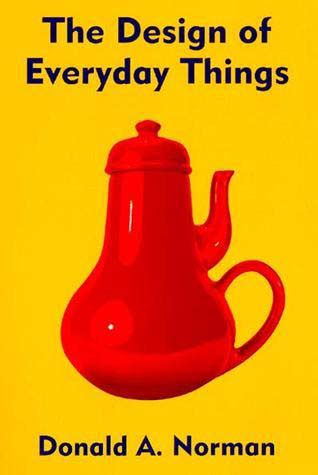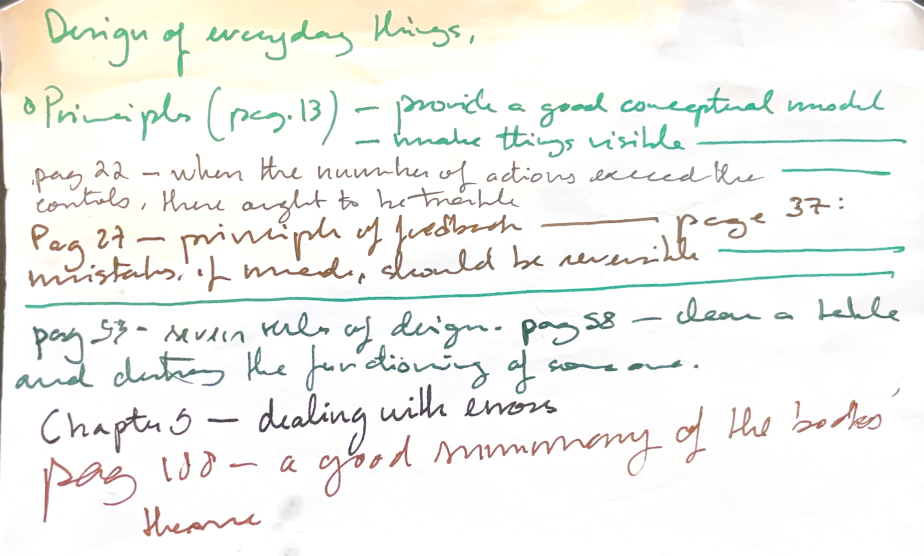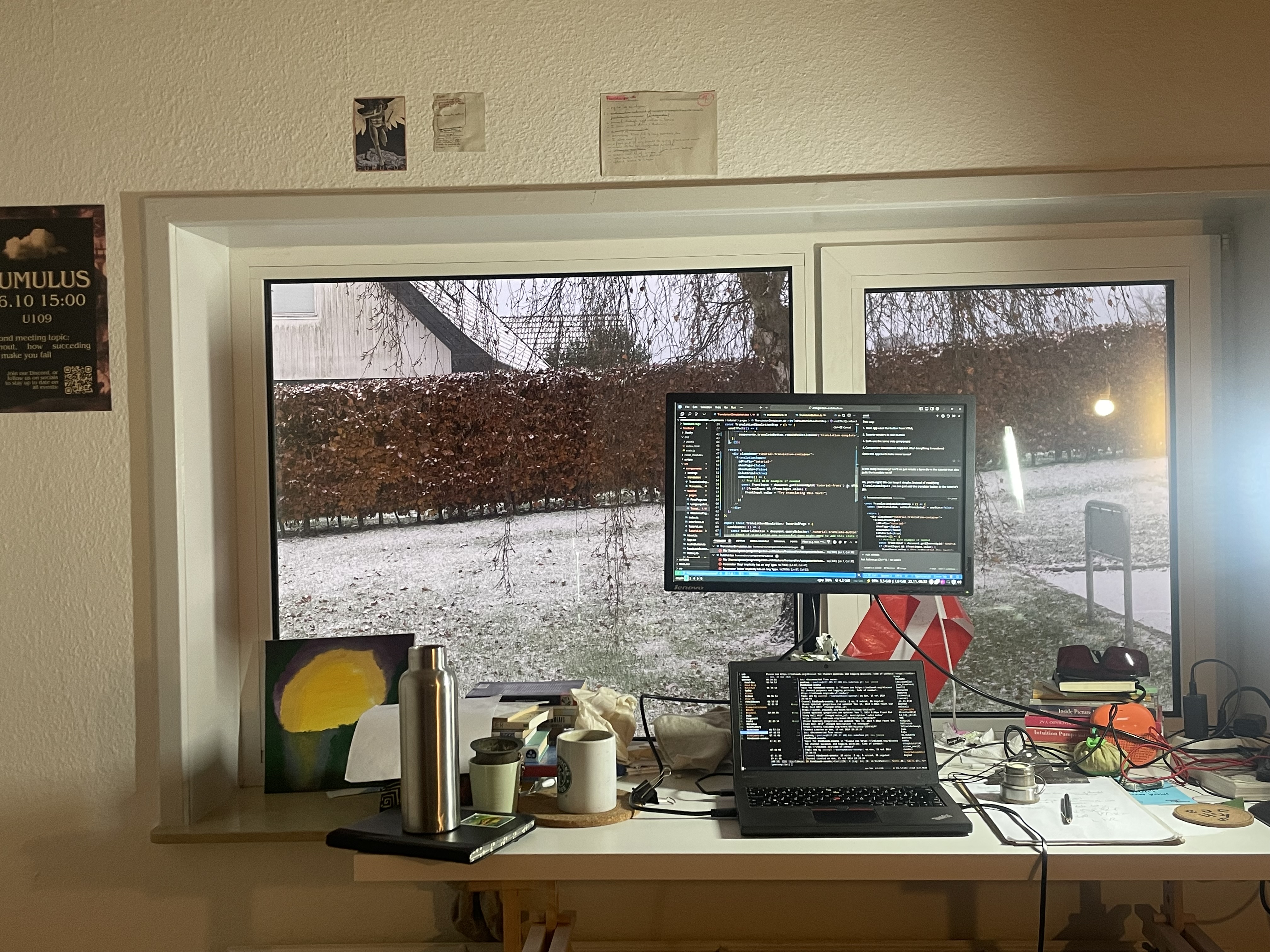
This book has one of the most eye-catching covers I have ever laid my eyes upon. I first saw it at a friend's place (a good designer!); later, at SDU's library — and since I was interested in working with interfaces (for ankigarden) — it felt like a great match. It is the kind of technical book that reads effortlessly, like a good novel, communicating throves of great ideas, with plenty of great anecdotes and examples. The book is even rather prescient in some ways, as it was written before the advent of the personal computer. At some point, Norman proposes the concept for an agenda he'd have at home, which would magically sync to an agenda at his office. It's the smartphone!
I took a few notes, but by hand, and thus I lost many opportunities to bring direct quotes. At the expense of the reader's patience — and in a exercise of truly bad design — I'll just paste the list of highlights — and try to get away with it.

There are a few maxims that stood out: good design makes errors reversible — if a user did something unintendedly, it should be easy to track back. We can map things in a natural manner: make interactions mimic the physical world and the common sense as much as possible and it will probably be fine. However, when the number of actions exceed the number of controls, one is probably set for a bad experience.
Feedback — sending back to the user information about what action has actually been done, what result has been accomplished — is a well-known concept in the science of control and information theory.
(once again, it really feels like I come across information theory again and again).
Design should:
- Make it easy to determine what actions are possible at any moment (make use of constraints);
- Make things visible, including the conceptual model of the system, the alternative actions, and the results of actions;
- Make it easy to evaluate the current state of the system;
- Follow natural mappings between intentions and the required actions; between actions and the resulting effect; and between the information that is visible and the interpretation of the system state.
In other words, make sure that (1) the user can figure out what to do, and (2) the user can tell what is going on.
Many people organize their lives in the world, creating a pile here, a pile there, each indicating some activity to be done, some event in progress. Probably everybody uses such a strategy to some extent. Look around you at the variety of ways people structure their rooms and desks. Many styles of organization are possible, but the physical arrangement and visibility of the items frequently convey information about relative importance. Want to do your friends a nasty turn? Do them a favor-clean up their desks or rooms. Do this to some people and you can completely destroy their ability to function.

| Title | The Design of Everyday Things |
|---|---|
| Author | Donald A. Norman |
| Publisher | MIT Press |